
Mount Ruapehu is an active stratovolcano at the southern end of the Taupō Volcanic Zone and North Island volcanic plateau in New Zealand. It is 23 km (14 mi) northeast of Ohakune and 23 km (14 mi) southwest of the southern shore of Lake Taupō, within the Tongariro National Park. The North Island's major ski resorts and only glaciers are on its slopes.

The Remarkables are a mountain range and skifield in Otago in the South Island of New Zealand. Located on the southeastern shore of Lake Wakatipu, the range lives up to its name by rising sharply to create a remarkable backdrop for the waters. The range is clearly visible from the nearby town of Queenstown.

Whakapapa skifield is a commercial skifield on the northern side of Mount Ruapehu in Tongariro National Park, New Zealand. It is one of three skifields on the mountain, the others being Turoa, which is on Ruapehu's south-western slopes and Tukino on the eastern slopes. The ski season is generally from late June to late October, depending on snow and weather conditions. The terrain at Whakapapa Skifield is divided up as 25% beginner, 50% intermediate and 25% advanced.

Mount Hutt rises to the west of the Canterbury Plains in the South Island of New Zealand, above the braided upper reaches of the Rakaia River, and 80 kilometres west of Christchurch. Its summit is 2190 metres above sea level.
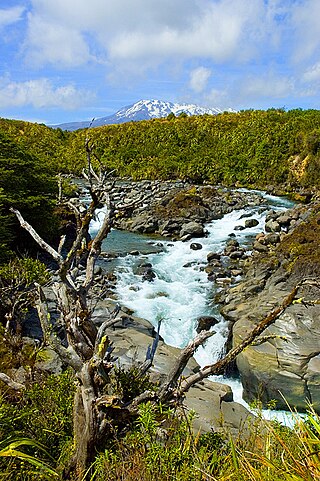
Tongariro National Park is the oldest national park in New Zealand, located in the central North Island. It has been acknowledged by UNESCO as a World Heritage Site of mixed cultural and natural values.
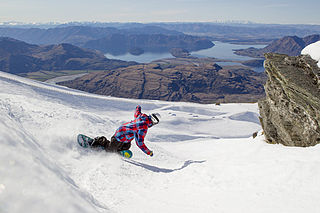
Treble Cone is the closest ski area to Wānaka, New Zealand.

Ohakune is a small town at the southern end of Tongariro National Park, close to the southwestern slopes of the active volcano Mount Ruapehu, in the North Island of New Zealand.
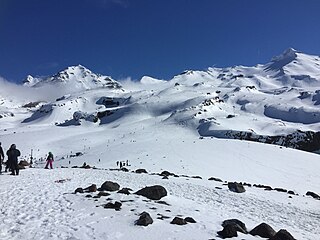
Tukino skifield is located on the eastern face of Mount Ruapehu, in the central area of the North Island, New Zealand.

Coronet Peak is a commercial skifield in Queenstown, New Zealand located seven kilometres west of Arrowtown, on the southern slopes of the 1,649-metre peak which shares its name. A popular ski resort in the Southern Hemisphere, Coronet Peak offers a long snow season, well received skiing and snowboarding terrain and lift systems.
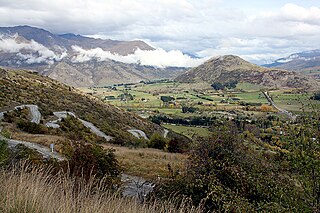
The Crown Range is a mountain range that lies to the east of the Wakatipu Basin in Otago, New Zealand. It is noted for two features, the Cardrona Alpine Resort, on the slopes of the 1900 metre Mount Cardrona, and a highway, known as the Crown Range Road, which winds steeply between Arrow Junction, just south of Arrowtown, and Wānaka to the north.

Ōhau is a small commercial skifield in the foothills of New Zealand's Southern Alps, near the boundary between the Otago and Canterbury regions, and close to the western shore of the lake of the same name. The skifield was originally developed by the Mount Cook and Southern Lakes Tourist Co. The field's service town, Lake Ohau Alpine Village, is located on the shore of the lake to the south of the skifield.

The Grand Chateau, also known as the Chateau Tongariro, was a hotel and resort complex located close to Whakapapa skifield on the slopes of Mount Ruapehu, within the boundaries of Tongariro National Park, New Zealand's oldest national park. It is also close to the volcanic peaks of Mount Tongariro and Mount Ngauruhoe. The building was completed in 1929 and, despite extensive refurbishment, still retains much of the style of the pre-Depression era. It is listed by Heritage New Zealand as a Category 1 historic place. The Chateau Tongariro Hotel closed permanently on 5 February 2023, largely because the building has significant seismic risks.
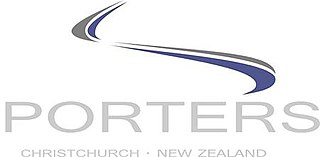
Porters, is a commercial ski resort just over an hour's drive (98 km) west from Christchurch, in the South Island of New Zealand. Originally functioning as a club skifield, it has one beginner magic carpet, one platter tow, one chairlift and three t-bars. The difficulty of the slopes is distributed as 15% beginner, 35% intermediate and 50% advanced. Modern grooming equipment is used, and snowmaking facilities operate along the main pistes along the chairlift.

Cardrona Alpine Resort is an alpine resort in New Zealand's South Island. The ski field ranges from 1,260m to 1,860m. The distribution of slopes is 20% beginner, 25% intermediate, 30% advanced and 25% expert. There are 2 detachable quad chairlifts, 2 fixed-grip quad chairlifts, 1 detachable express chondola, 3 surface conveyor learner lifts and 1 platter lift to service the halfpipes and big air jump. Snowmaking supplements the 2.9m average annual snowfall. Freestyle Snowboarding and skiing are well catered for with 2 half-pipes and 4 terrain parks. There is also a "high performance centre" which trains more advanced skiers and snowboarders. Families with infants and young children can use child care facilities provided in the Cardrona Nursery and Ski Kindy.

The Mangawhero River is in the North Island of New Zealand. It drains the south-western slopes of Mount Ruapehu, passes through Ohakune before discharging into the Whangaehu River to the south-west of Mangamahu.

Snow King Mountain is a summer and winter resort in the western United States, in Jackson, Wyoming. The mountain is Jackson's original 1936 ski hill, located on the southeast edge of the city, and was the first ski area in Wyoming. Locals sometimes refer to Snow King as "The Town Hill," and it offers skiing, hiking, an alpine slide, and many other attractions. The ski season runs from December to late March, and has a summer season that runs from June to October. Skiing is offered after the closure of lifts, until the snow is gone thanks to a boot pack trail on the west side of the resorts Runs. Hiking trails are offered all over the mountain.

Rangataua is a small village in the North Island of New Zealand. It is located at the southern end of both the Tongariro National Park and Rangataua State Forest, adjacent to the southwestern slopes of the active volcano Mount Ruapehu. Part of the Manawatū-Whanganui region, the town is 5 kilometres east of Ohakune, 75 kilometres northeast of Wanganui, and 20 kilometres west of Waiouru.
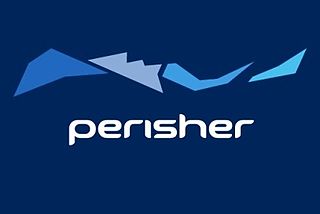
Perisher Ski Resort is the largest ski resort in the Southern Hemisphere. Located in the Australian Snowy Mountains, the resort is an amalgamation of four villages and their associated ski fields, covering approximately 12 square kilometres (5 sq mi), with the base elevation at 1,720 metres (5,640 ft) AHD, and the summit elevation of 2,054 metres (6,739 ft) at the top of Mount Perisher. 4.4 square kilometres (1.7 sq mi) of this area is covered by 240 snow guns, which are used to artificially supplement the natural snowfall. Perisher was acquired by Vail Resorts, United States on 30 March 2015 for a sum of approximately AU$177 million.
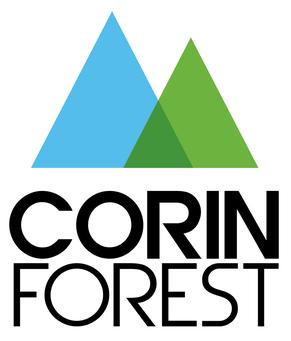
Corin Forest Mountain Resort is a commercial ski field and tourist destination located in the Tidbinbilla Range, south-west of Canberra. Situated in a mountain ash forest near the Namadgi National Park. In winter, it offers Australia's most northerly lifted ski area, and the closest to the national capital of Canberra. A 1.2 km mountain slide operates in the warmer months.





















